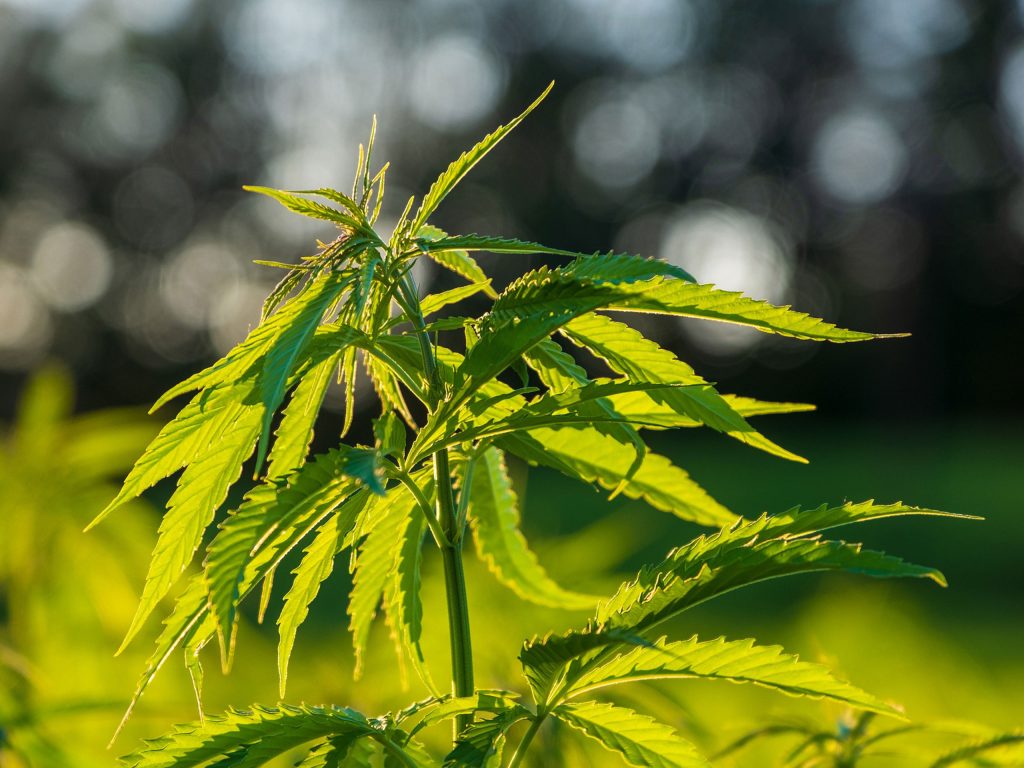
Hemp meets the zeitgeist. As the oldest useful plant in the world, which has been processed and utilized by cultures in many different ways since time immemorial, it is not only used as an intoxicant and medicine. The female hemp plant is used for this purpose. Other possibilities include processing hemp into flour and oil, drinking it as tea, weaving it into textiles, braiding it into ropes, using it for thermal insulation and as an industrial lubricant, processing it into paper, cosmetics and cleaning agents and using it as a biofuel.
Most of the cultivation takes place in China and India. Europe is following suit. The largest area under cultivation in Europe in 2020 was in France. Hemp was cultivated there on 16,880 hectares. But there are also hemp plantations in Germany, Austria and Lithuania. We present some exciting products.
Taste: Slightly nutty, rich in vegetable protein and fiber.
Production: Hemp flour is obtained by carefully grinding the seeds, which makes it particularly easy to break down and the ingredients are therefore very quickly available to the body. Hemp flour is produced during the manufacture of hemp oil.
Use: In muesli, with desserts, for baking and cooking; to refine sauces, with honey and butter as a spread, as a protein supplement for athletes.
Consumption advice: Gluten-free, recommended daily amount max. 15 g per day. Freshly ground, it will keep for three months if stored in a cool place.
Production: Cold-pressed from hemp seeds by an oil mill, never heated above 40 to 60 degrees.
Taste: Slightly nutty, lemony-green color.
Use: Not suitable for cooking, for preparing salads, for intensifying the flavor over ready-made vegetable dishes. It accentuates their flavor without becoming too dominant and adds a beautiful shimmer. Add to smoothies, especially together with avocado, banana or green vegetables.
Storage: Keep refrigerated after opening.
Taste: Reminiscent of the aroma of sunflower seeds, while their consistency is more like that of cashew nuts.
Use: As decoration, as a smoothie ingredient, sprinkle over yogurt and muesli, use in cookies or muesli bars, add to salads or dips.
Production: Not to be confused with hemp flour, even if it is obtained in a similar production process to the flour. Hemp protein powder is made from the “cake” left over from hemp oil extraction. This residue is ground again at very low temperatures to break down the fiber and concentrate the protein.
Taste: Nutty.
Use: As an addition to smoothies.
Production: From hemp seeds, home production from hulled or unhulled hemp seeds possible.
Preparation with hulled hemp seeds (creamier, more filling than filtered hemp milk): per tablespoon of hulled hemp seeds, mix 100 ml of water, sweetener (rice syrup, coconut blossom syrup, maple syrup) and fine-grained salt in a blender to a creamy liquid. Can be kept refrigerated for up to three days.
Preparation with unpeeled hemp seeds: 200 g unpeeled hemp seeds, 1 l water, sweetener (rice syrup, coconut blossom syrup, maple syrup). Blend the hemp seeds and water for three minutes, then add the sweetener and blend for one minute. Filter the liquid through cheesecloth or cheesecloth. The remaining hemp puree can be processed into a pesto.
Use: As a 1:1 milk substitute, as milk does not have any specific functions, such as eggs, that the hemp version cannot fulfill. Therefore ideal for shakes, smoothies, ice cream. Take care when boiling, as it flocculates easily.
Note: Free from lactose, milk protein, soy, cholesterol and gluten.

From ticketing systems to cooking robotics: the restaurant industry is undergoing a digital transformation. What began as a technological gimmick is now becoming a real competitive advantage. Why digital processes bring more predictability, better guest experiences and new perspectives for employees – and where people still remain irreplaceable.
Organic is not a label – it’s an attitude. In Falkenstein, Lower Austria, the Pesau winery practices organic farming as a generational contract: for the soil, for the landscape, for the wine. A conversation with Andreas and Georg Pesau about living origin, sustainable craftsmanship and the courage not to bow to every trend.


Hemp meets the zeitgeist. As the oldest useful plant in the world, which has been processed and utilized by cultures in many different ways since time immemorial, it is not only used as an intoxicant and medicine. The female hemp plant is used for this purpose. Other possibilities include processing hemp into flour and oil, drinking it as tea, weaving it into textiles, braiding it into ropes, using it for thermal insulation and as an industrial lubricant, processing it into paper, cosmetics and cleaning agents and using it as a biofuel.
Most of the cultivation takes place in China and India. Europe is following suit. The largest area under cultivation in Europe in 2020 was in France. Hemp was cultivated there on 16,880 hectares. But there are also hemp plantations in Germany, Austria and Lithuania. We present some exciting products.